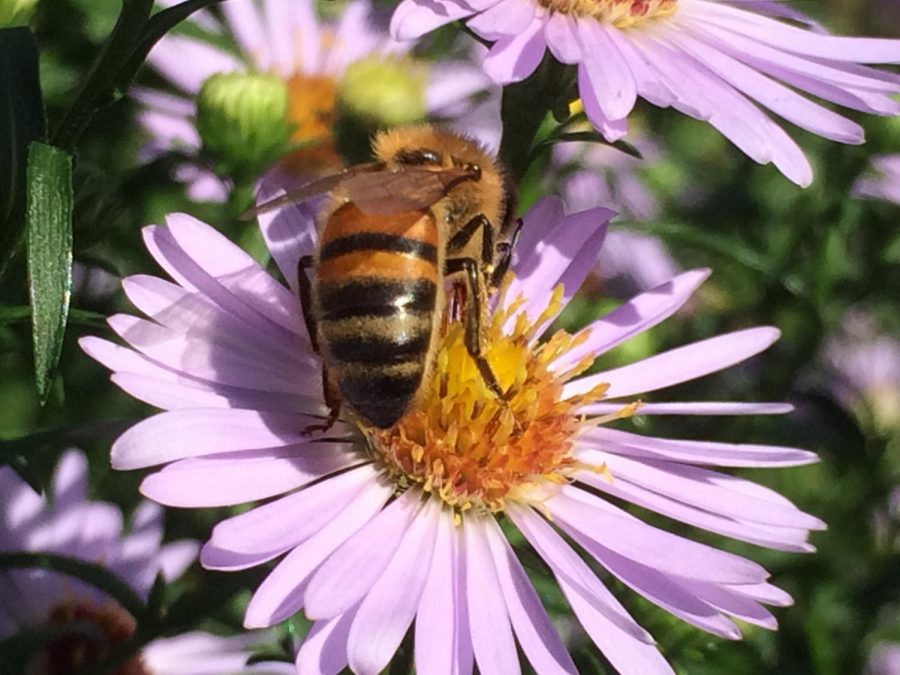To Bee or Not to Bee … It’s A Relevant Question
There is an enemy found in America’s nature at this moment. It can be our reason for what we eat, and even put in our hair. A being who has made us all believe we need not only the environment to survive but for humans as well. This creature has found its way to make humanity fall at its feet, the lie that we must preserve them to survive. And that creature is nothing more than, the bee. Yes, you have read this right. The bee is what is making mother nature not being able to shine the way it should. So sit back, and re-consider where you should take your child to kindergarten, cause this article will make you re-think your perspective of the bee.

Ok, so more specifically, we will be talking about the Western Honey bee, or more commonly known as just the Honey bee or the European Honey bee. These bees’ appearance is what you would imagine any bee. Yellow, with black stripes in its abdomen. These bees are naturally found in Europe, East Asia, and Africa. Many of you might know that they also live in the U.S. But, they are not actually native to the U.S. In fact, these Honey bees an invasive species, a species that was brought by humans into a new location or environment that is not of its own. In the early 1620s, European settlers brought these bees to the Americas as any other agricultural animal, like chickens or cows. But they weren’t brought for their pollination abilities, but for their honey-making abilities, like a cow that produces milk. And for all those who are a biologist, having an invasive species doesn’t guarantee us any good. In fact, it can roll the complete opposite. There have been many examples that involve humans introducing animals and plants to new environments that end up in disaster. From cane toads in Australia to the Zebra mussel in European lakes. The Western Honey bee is no different.
As we commonly know, the population of native bees has been falling. It not 100% clear why, but the most possible reasons are climate change, habitat loss, and the overuse of pesticides.  But there is another factor to add to the list, and that’s the Honey bee. Because the Honeybee isn’t local to the environment it’s in, they compete with many of the bees from the region for floral resources. This is an issue, since some plants and flowers need of some bees in their ecosystem to perform different task. They also compete for nesting grounds. Because of this, native bees, and especially everyone’s favorite, the Bumblebee, have had their population decreased.
But there is another factor to add to the list, and that’s the Honey bee. Because the Honeybee isn’t local to the environment it’s in, they compete with many of the bees from the region for floral resources. This is an issue, since some plants and flowers need of some bees in their ecosystem to perform different task. They also compete for nesting grounds. Because of this, native bees, and especially everyone’s favorite, the Bumblebee, have had their population decreased.
Like how humans from the European states brought smallpox to the Americas, the Honey bee brought their own diseases. The Western Honey bee have virus that other bees don’t have an immune to. If a native bee comes in contact with a flower that a Western Honeybee has already landed on before, it has a possibility of catching the disease and die. In an article by Jonas Geldmann, Conserving honeybees does not help wildlife, quote, “…honey bees are linked to the spread of diseases to wild pollinators via shared flowers, an effect that is likely amplified by trade with and movement of honeybees.” And the local bees aren’t the only ones affected by this. More often or not, we forget that bees aren’t the only pollinators. Butterflies, ants, and beetles are just a few examples of pollinators. Not to mention that they pollinate for free. And these creatures also have their own mutual relationships with flowers. Flies lay there eggs on them, to butterflies drinking the nectar for energy in long flights.
But don’t Honey bees help with pollination? Surely that’s what good about them. No. Absolutely not. Pollinators do a just better job than they do. Based on the article, Keeping honeybees doesn’t save bees – or the environment by Olivia Norfolk, the Western Honey bees in the UK don’t do as much as the local pollinators.
“Honeybees are extremely efficient at collecting pollen and returning it to their hives, but as a consequence they transfer little to the flowers they visit.” says Olivia Norfolk, “They are quantifiable less effective at pollination than wild bees, so changes in foraging patterns also have knock-on consequences for the plant community.”
 Yes, this is true. And us wanting to help the Western Honey bee for saving bees, is like trying to save chickens to save wild birds. But the Honey bees are quite protected by humans. Our boxes that help them grow surely doesn’t help the environment shine as it should. So reevaluate what you been taught about these insects, because the Bumblebees and the other pollinators, hide behind the fame of the Western Honeybee, being forgotten of what great service they do to the planet.
Yes, this is true. And us wanting to help the Western Honey bee for saving bees, is like trying to save chickens to save wild birds. But the Honey bees are quite protected by humans. Our boxes that help them grow surely doesn’t help the environment shine as it should. So reevaluate what you been taught about these insects, because the Bumblebees and the other pollinators, hide behind the fame of the Western Honeybee, being forgotten of what great service they do to the planet.
The reason I joined is that I enjoy typing/writing stories and I knew that in journalism, you do that alot, but never was able to do journalism class in...






